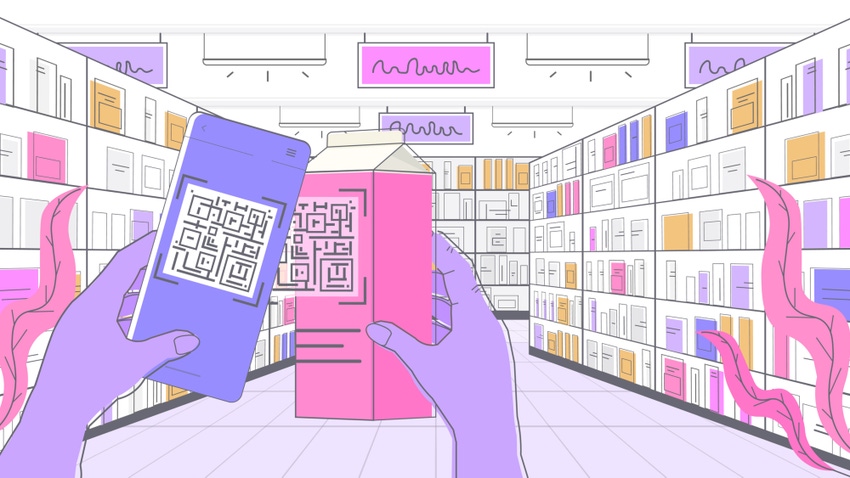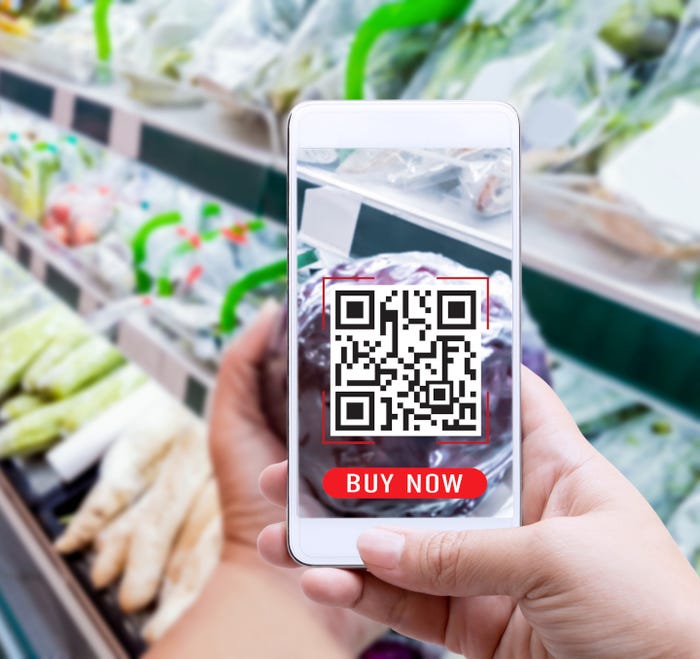7 Reasons, and 5 Ways, to Use QR Codes on Your Packs
Expand your package’s communication bandwidth with these tips for getting the most out of using Quick Response codes.

The adage “less is more” rings true in the packaging industry. The minimalism trend continues to gain traction as brands seek to streamline their designs. Reducing the noise allows customers to focus on what’s essential: product information.
A small, single code directs consumers to a gateway of content a package can’t accommodate …
Smart packaging, like a Quick Response or QR code, supports this trend because the technology doesn’t limit brands in what they can share with customers. A small, single code directs consumers to a gateway of content a package can’t accommodate, including additional product details, usage instructions, sustainability initiatives, reviews, and interactive experiences.
By offering a wealth of information, QR codes act as a sales assistant, fostering informed purchasing decisions and enhancing the overall customer experience.

BlackSalmon / iStock via Getty Images Plus
A gateway to product information.
The sky’s the limit for sharing product information through QR codes. These seven ideas are some of the most popular reasons to print a QR code on your package:
1. Product reviews.
Most consumers need to read reviews before deciding to purchase a product. Nine in 10 consumers say they consider reviews when making a purchase decision. Rather than wasting time searching for reviews online, customers can scan a QR code to browse through existing reviews or voice their opinions on a product.
Both positive and negative reviews hold equal value. Positive product reviews convince customers to make the right purchase decision, while negative reviews identify consumers’ problems with a product and help brands make the necessary improvements. The result? A product consumers love.
2. How-to videos.
QR codes can direct shoppers to how-to videos on a brand’s website or YouTube channel. These engaging video tutorials provide an interactive way for shoppers to see products in action and fully understand functionality and proper use.
For shoppers unfamiliar with new gadgets or equipment, how-to videos offer invaluable education at the point of sale. Brands can demonstrate proper assembly, walk users through different features, illustrate best practices, and provide troubleshooting guidance. Not only do videos help customers feel empowered to purchase an unfamiliar product, but they also reduce returns and dissatisfaction by setting clear expectations.
3. Sustainability information.
Today’s shoppers are more environmentally conscious than ever, with 70% of US consumers saying they would change their shopping habits if they discovered a store or brand wasn’t operating sustainably.
QR codes can share a brand’s sustainability story to connect with eco-minded buyers. For example, a brand selling products made from recycled materials could explain its mission to provide high-quality, waste-free goods that help the planet.
4. Product authenticity.
QR codes can validate a product’s authenticity by tracing the journey from origin (a farm, for example) to store. Consumers scanning a QR code on a product’s packaging are directed to a landing page with the product’s origin and ingredients. This transparency establishes a brand’s credibility.
5. Interactive product experiences.
QR codes, coupled with augmented reality (AR), change how consumers interact with smart packaging, blurring the lines between the physical and digital worlds and creating immersive, engaging experiences. In its flagship store, shoe brand Puma added QR codes to shoe tags, which linked to an AR with the Puma feline mascot. Customers could engage with the mascot by taking a selfie.
6. Social media.
QR codes can drive social media traffic. Attracting more visitors increases the likelihood a brand’s page gains more likes, shares, followers, and subscribers. Brands can list their social media accounts on a single landing page. Customers then choose the content they want before being redirected to their final destination. Social media accounts can include additional product information or even product discounts.
7. Retargeting.
QR code retargeting helps brands reach prospective customers who’ve scanned a QR code but haven’t converted yet. A consumer may scan a dynamic QR code on a product package in-store but ultimately decide not to purchase the product. However, during the visit to the brand’s website, a cookie is dropped into the customer’s browser. This action lets retargeting platforms, like Google and Facebook, know that this particular consumer is interested in specific content on a brand’s website. Later on, while the consumer browses on Google or Facebook, brands can retarget them via specific ads in their ad space, increasing the likelihood of conversion.

ARISA THEPBANCHORNCHAI / iStock via Getty Images Plus
Best practices for using QR codes on product packaging.
Brands new to using QR codes or ready to include them on their packaging should keep these tips in mind.
1. Add personalized QR codes.
Avoid boring black-and-white QR codes and personalize them with brand colors and logos. Not only are they more attractive, but high-contrast colors also make QR codes easier to scan.
2. Ensure the code is scannable.
Always test QR codes before printing on packaging to avoid costly reprints. Shoppers cannot scan QR codes if they’re too small or blurry.
3. Include a compelling call-to-action (CTA).
QR codes require personalization to create a sense of urgency. Develop a compelling and relevant CTA with the code to give customers a reason to scan.
4. Focus on placement.
Treat QR codes like a website CTA button. Put them in the first half of your packaging, just like the above-the-fold placement choice for your CTA buttons.
5. Avoid using multiple QR codes on one product package.
Bombarding customers with multiple QR codes is a poor strategy. Don’t create separate codes for product reviews, how-to videos, and sustainability information, for example. Instead, deploy a QR code with a landing page for multiple experiences.
Brands must make detailed information readily accessible to customers, as 87% use their smartphones to research products in-store at least some of the time. QR codes have emerged as a strategic solution, offering endless amounts of information in a tiny space and with a simple scan.
QR codes have emerged as a strategic solution, offering endless amounts of information in a tiny space and with a simple scan.
By embracing QR technology, brands cater to the research-oriented habits of modern consumers and enhance the in-store experience, providing a seamless and informative journey that empowers customers and strengthens brand-consumer relationships.
About the Author(s)
You May Also Like


